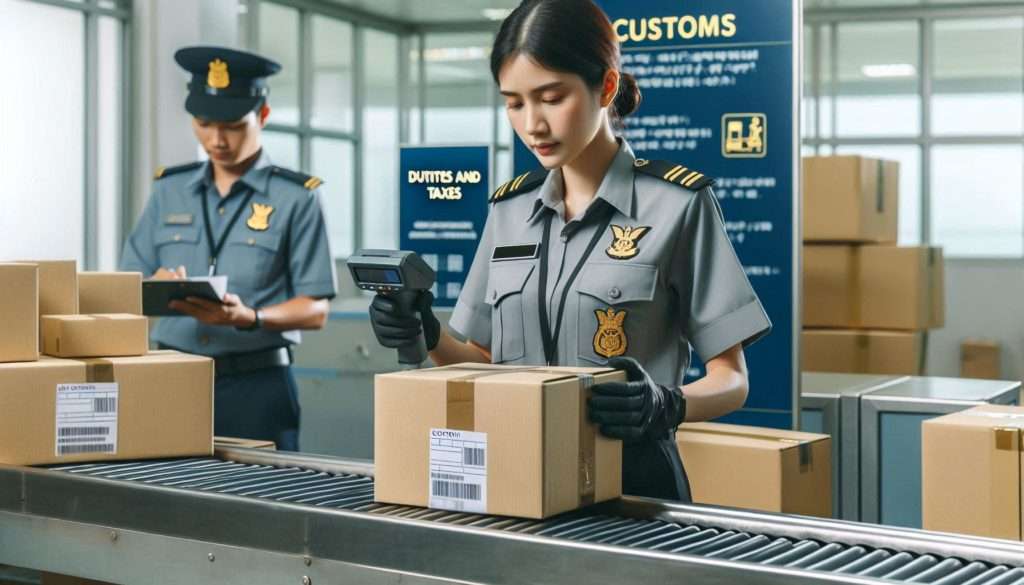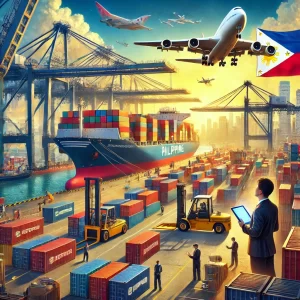Duties and Taxes are among the most important considerations when bringing goods into the Philippines, whether for personal or business use. If you’re a first-time importer or a seasoned trader, knowing how costs are computed helps avoid delays and unexpected expenses.
At first glance, customs charges may appear complicated; however, understanding their components leads to better decisions and long-term cost savings. To help you confidently import goods into the Philippines, this guide breaks down the process using simple language, examples, and helpful tips. In addition, official references are included to ensure accuracy, making it easier for both new and experienced importers to stay compliant. By learning how to calculate charges properly, you can reduce errors, avoid delays, and improve the overall efficiency of your import activities.
Understanding Duties and Taxes
Duties and Taxes refer to the total government charges levied on imported goods based on their value, classification, and origin. They’re usually composed of customs duties, value-added tax (VAT), excise tax (if applicable), and sometimes special duties like anti-dumping taxes. When goods arrive in the Philippines, the Bureau of Customs (BOC) is responsible for evaluating the shipment and collecting applicable fees. These fees support national revenue and protect local industries from unfair competition, smuggling, or harmful products entering the market.
Subscribe to the Ex-works24/7 newsletter
Tips to Avoid Overpaying Duties and Taxes
To reduce expenses on Duties and Taxes, check if your goods qualify for reduced rates under Free Trade Agreements like ASEAN-China FTA. Furthermore, using the correct HS code and securing a Certificate of Origin allows importers to benefit from lower or zero tariff rates. It is also wise to consult a licensed customs broker who understands BOC processes and provides assistance with documentation and assessments. Moreover, brokers can guide you through digital platforms such as the BOC’s CPRS and Automated Customs Management System for smoother transactions.
Import documents To Consider
All imported goods must be supported by essential documentation; otherwise, delays in customs processing are likely to occur during clearance procedures. Therefore, submitting accurate paperwork on time helps importers avoid costly setbacks and ensures smoother coordination with the Bureau of Customs authorities. In this article, you will find an overview of key import documents, including restricted items and how applicable taxes are calculated. Additionally, since requirements may differ based on product type, importers should prepare for additional documents that may include the following items.
An endorsed Bill of Lading or Airway Bill.
A sales invoice that shows the commercial value of the goods.
A packing list with the detailed information regarding the products
Duly notarized Supplemental Declaration on Valuation (SDV)
Import license for the Philippines or permit
Certificate of origin only for those products for which you want to avail preferential tariffs under free trade agreements.
Other documents and certificates that prove exemption from taxes and customs fees in the Philippines
Authority to Release Imported Goods (ATRIG)
Tax Credit Certificate (TCC)
Tax Debit Memo (TDM)
If a ruling was used in goods declaration, a copy of the verdict is required.
How to Calculate Duties and Taxes?
An import tax calculator can be used to determine customs duty in the Philippines. Import duty rates are based on the value of the imported goods, and are applied in addition to the 12% Value Added Tax (VAT), which is charged on the total cost of unloading.
For example, if the dutiable value of the imported products is US$2000 and a 3% customs duty rate is applied, the import duty would be calculated as 3% of US$2000, equaling US$60.
A 12% VAT is also applied to both the dutiable value and the customs duty. This would be calculated as 12% of the sum of the declared value (US$2000) plus the customs duty (US$60), resulting in US$247.20.
The total import duties for the goods would therefore be:
– Customs Duty: US$60.00
– VAT (12%): US$247.20
– Total: US$307.20
In addition to import duties and VAT, some products may be subject to other taxes, including:
– Ad Valorem Tax: Imposed on alcohol, tobacco, automobiles, and jewelry.
– Storage and Handling Charges: Applied for warehousing and handling of goods.
– Excise Tax: Charged on alcohol, tobacco, petroleum products, mineral products, automobiles, jewelry, perfume, toilet water, yachts, and vessels.
– Bulk Cargo Fees: Levied on liquids, chemicals, petroleum products, grains, and other bulk cargo.
Duties and Taxes for Online Shoppers and SMEs
Even small online purchases or packages are subject to Duties and Taxes if their value exceeds the PHP 10,000 de minimis threshold. Anything over this amount is inspected and taxed, so it’s vital for online sellers and buyers to factor this into pricing strategies. For e-commerce and SMEs importing raw materials or finished goods, knowing how to calculate duties and taxes in the Philippines is essential. Unexpected fees can affect your margins, delivery timelines, and customer satisfaction, especially for startups scaling operations nationwide.
Conclusion: Calculating duties and taxes in the Philippines may seem overwhelming at first, but the process becomes manageable with the right guidance. However, by following clear steps and using trusted resources, individuals and businesses can easily comply with customs rules and avoid complications. Moreover, understanding each stage of the process allows importers to plan better, reduce risks, and streamline their international trade activities. Consequently, informed decisions lead to smoother shipments, fewer delays, and more cost-effective import operations in the long term.
Frequently
Asked Questions
When importing goods into the Philippines, the following duties and taxes typically apply:
- Customs Duty: This is imposed based on the tariff classification of the goods. The rate depends on the type of product being imported.
- Value-Added Tax (VAT): VAT is generally imposed at 12% on the dutiable value of the goods, which includes the cost of the goods, shipping, insurance, and customs duty.
- Excise Tax: Some goods like alcohol, tobacco, petroleum, and automobiles are subject to excise tax in addition to customs duties.
- Customs Service Fee: A processing fee for the customs clearance procedure.
- Other Local Taxes: Depending on the nature of the goods and the local government, additional local taxes may apply.
Customs duty is calculated as a percentage of the Customs Value (C.V.) of the goods. The Customs Value is made up of:
- Invoice Value (the purchase price of the goods)
- Shipping Cost (freight charges to the Philippines)
- Insurance Cost (if applicable)
The formula is:
Customs Duty = Customs Value x Customs Duty Rate
The Customs Duty Rate is determined by the Philippine Tariff and Customs Code, and can vary depending on the product classification in the HS (Harmonized System) code.
VAT in the Philippines is set at 12% for most goods and services. The VAT on imported goods is calculated based on the Dutiable Value (which includes the customs value plus any applicable customs duties). The formula is:
VAT = Dutiable Value x 12%
The Dutiable Value is the cost of the goods, shipping, insurance, and any customs duties incurred. So, after determining the customs duty and adding it to the customs value, VAT is applied to the sum of the total value.
Yes, there are certain exemptions and reductions on duties and taxes for specific types of goods. Some examples include:
- Freeport Zones: Goods imported into freeport zones may be exempt from customs duties and taxes.
- Personal Effects: Personal items brought into the country are often exempt from duties if they fall under the personal baggage exemption.
- Non-Profit and Charitable Organizations: Goods donated to non-profit organizations may be exempt or have reduced rates.
- Diplomatic Exemptions: Diplomatic representatives may have exemptions on customs duties and taxes.
However, these exemptions depend on specific regulations and documentation, so it's essential to check with the Bureau of Customs for eligibility.
To calculate the total cost of importing goods into the Philippines, you must factor in all associated duties, taxes, and fees. The steps are as follows:
- Determine the Customs Value: This includes the cost of the goods, freight, and insurance.
- Calculate Customs Duty: Apply the applicable customs duty rate to the customs value.
- Add VAT: VAT (12%) is applied to the dutiable value (the sum of the customs value + customs duty).
- Include Other Taxes: If applicable, such as excise taxes or local taxes.
- Add Fees: Customs processing fees or service charges.
Total Cost = Customs Value + Customs Duty + VAT + Other Taxes + Fees
After calculating these, you will have the total cost of importing goods into the Philippines.




